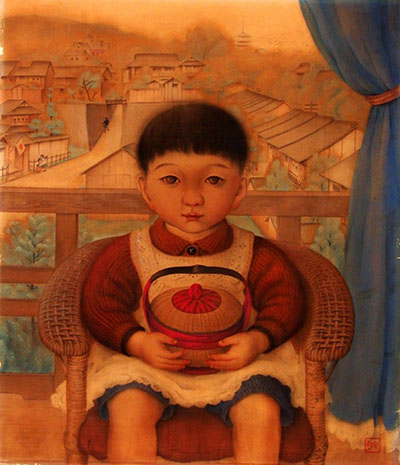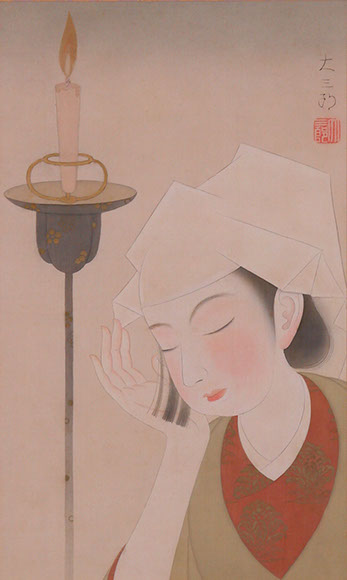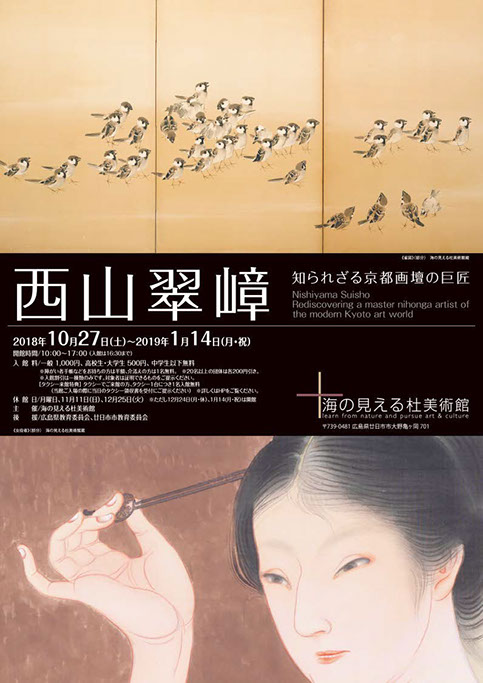Exhibitions
Umi-Mori Art Museum Special Autumn Exhibition Nishiyama Suisho Rediscovering a Master Nihonga Artist of the Modern Kyoto Art World
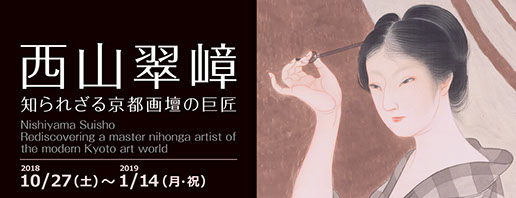
Foreword
The year 2018 marks the 60th anniversary of the death of artist Nishiyama Suisho (1879-1958). In memory of his artistic achievements the Umi-Mori Art Museum has organized a special exhibition which will provide an overview of his works.
Nishiyama Suisho was born in 1879 in Kyoto and studied art as a disciple of the master Japanese-style painter Takeuchi Seiho (1864-1942). Being unsatisfied with only the study of Japanese painting, he also studied figure drawing from the Western-style painter Asai Chu (1856-1907). He regularly submitted entries to open art exhibitions from early in his career, and after the Ministry of Education Art Exhibition (“Bunten”) was established in 1907, he became an outstanding presence in government-sponsored exhibitions in which he consistently received awards for his entries. He later held many important posts based on his achievements as an artist, such as adjudicator of state-sponsored exhibitions and principal of the Kyoto Municipal School of Fine Arts and Crafts. Suisho was regarded as the successor to Takeuchi Seiho, having married Seiho’s daughter, and can be said to have been one of the most influential Japanese-style painters in the Kyoto art scene from the late Meiji to early Showa eras (early to mid-20th century). In addition, Suisho was an excellent teacher and trained many important artists of the succeeding generation at his private art school Shokosha including Domoto Insho (1891-1975), Uemura Shoko (1902-2001), and Akino Fuku (1908-2001). In recognition of his many achievements, was awarded the Order of Cultural Merit in 1957, becoming the third Japanese-style painter who worked in Kyoto to receive the honor, following Takeuchi Seiho and Uemura Shoen (1875-1949).
Suisho’s style is characterized by the expert brush technique and drawing skills acquired from his master Seiho along with his drawing expertise of the human figure and infused his works with the rich emotional quality which was the hallmark of his paintings. He learned through his study of western-style painting from Asai, infused with a rich sensitivity. His versatility is evident in the diverse subjects of his paintings which include figures, flower-and-bird paintings and landscapes.
However, most of Suisho’s works today, especially the masterpieces submitted to state-sponsored exhibitions, have dispersed to the extent that although mention is often made of his distinguished career, his works have not received the recognition they deserve, and a retrospective exhibition of him had never been held previously. The Umi-Mori Art Museum possesses full-scale draft sketches of his works, important materials which enable us to obtain glimpses of many of his remarkable works now that the completed paintings are no longer available. In this exhibition we will display his representative works along with drafts and sketches, the first attempt to gain a whole picture of his artistic career as much as possible. We hope this exhibition will provide an opportunity for many people to experience the charm of Suisho’s art.
Lastly, we would like to express our sincere gratitude towards the museums for their generosity in sharing their precious artworks and to the many people who made this exhibition possible through their support and cooperation.
Venue: Umi-Mori Art Museum (701 Kamegaoka, Ohno, Hatsukaichi, Hiroshima)
With the support of: Hiroshima Board of Education and Hatsukaichi City Board of Education
Dates: Saturday, October 27, 2018 to Monday, January 14, 2019
Hours: 10:00-17:00 (Last entry: 16:30)
Closed: Monday (However, the museum will be open the Monday of December 24 and January 14), November 11, December 25
Admission:
General admission: 1,000 yen
High school/university students: 500 yen
Junior high school students and younger: Free
*Admission is half price for people with disability certificates, etc. One accompany person is admitted free of charge.
*Groups of 20 or over will receive a discount of 200 yen per person.
Inquiries: info@umam.jp
Chapter 1 Suisho’s Focus on Government-sponsored Art Exhibitions
–From promising young painter to leading figure of the art world–
From an early stage in his career, Suisho submitted paintings to many publicly-sponsored art exhibitions, receiving several awards. In 1907 when Suisho was 28 years old, the Ministry of Education held its first Art Exhibition (“Bunten”) after which he exhibited his paintings mainly through government-sponsored exhibitions. He established a steady presence in artistic circles, and eventually served an important position as adjudicator. He exhibited his most ambitious works in the annual government art exhibitions. Most of his paintings have now been widely dispersed but the full-scale preliminary sketches preserved at this museum enable us to observe how he engaged in the creation of his masterpieces. Here we introduce examples of his most famous works including Palace in the Lunar World, Short Night, and Sunshine and Rain along with full-scale preliminary sketches through which we can follow Suisho’s career from when he was a young painter, culminating in his emergence as a leading figure in Japan’s art scene.
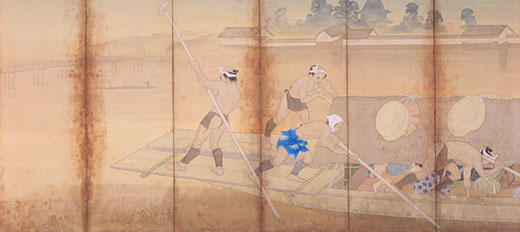
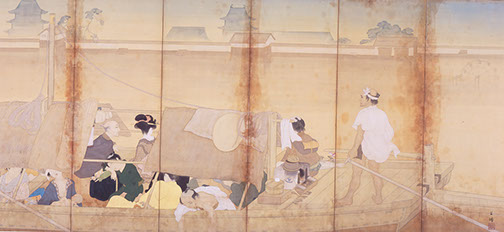
Nishiyama Suisho: Short Night
Hyogo Prefectual Museum of Art
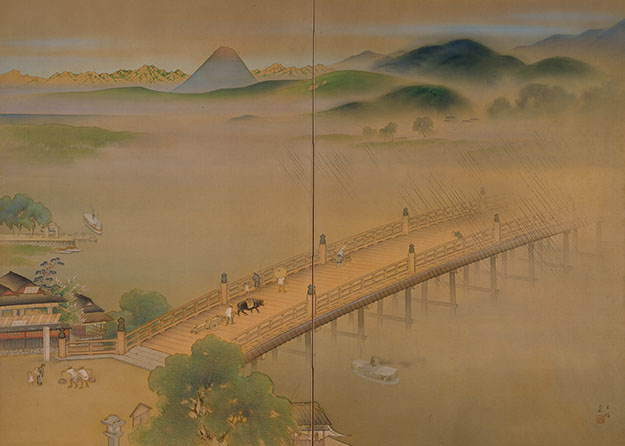
Kosanji Museum
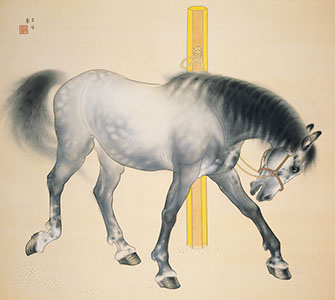
Kyoto Municipal Museum of Art
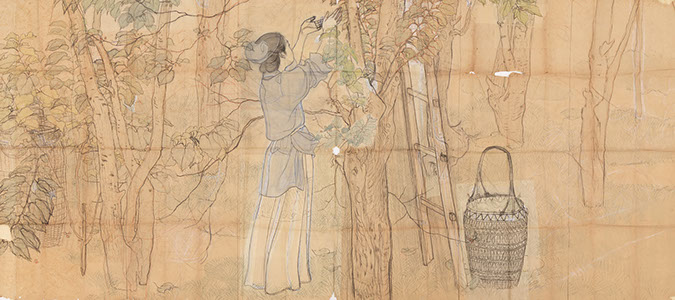
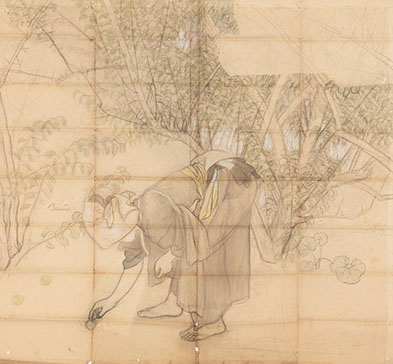
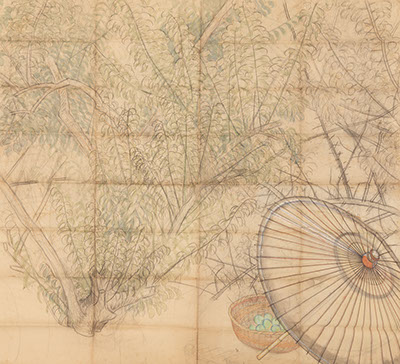
Nishiyama Suisho: Full-Scale Sketch for Fallen Plums
Chapter 2 Legacy and Development
–Takeuchi Seiho’s influence and the creation of his own style–
In 1892, 13-year old Suisho became a disciple of the Japanese-style painter Takeuchi Seiho, then a young artist who later went on to become a master artist in the Kyoto art world. The young Suisho copied and sketched ancient artworks and paintings by Seiho and other contemporary painters. In Tigers, which is believed to be an example of his early work, he emulated the style of Seiho who was known for his skill in painting animals. However, in the later work Three Egrets this early influence was replaced by his own distinctive sensitive and emotional style of expression.
Suisho also studied the drawing of human figures under western-style artist Asai Chu. In particular, Sumo Wrestling based on an old painting, is a masterpiece enhanced by his accurate portrayal of the human body.
Here we present works which make it possible to observe the development of Suisho’s own style of painting in addition to the techniques he acquired from Seiho, characterized by the rich and poignant expression of his renderings, use of vibrant colors and realistic portrayal of human figures.
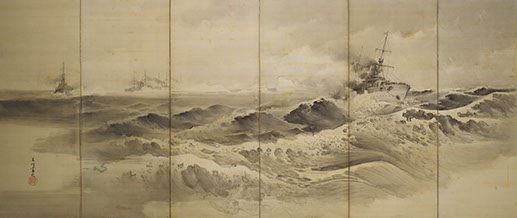
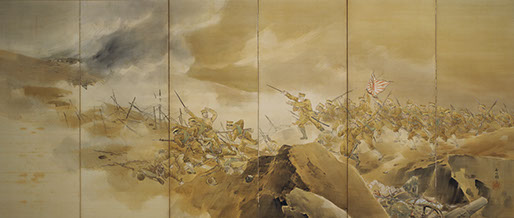
Nishiyama Suisho: Russo-Japanese War
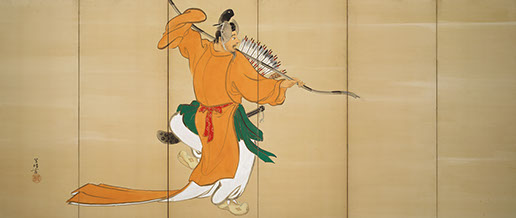
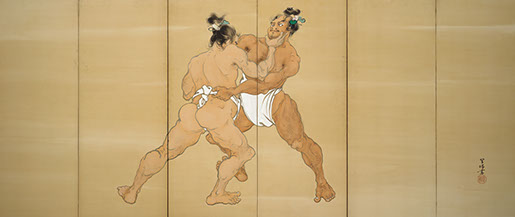
Nishiyama Suisho: Sumo Wrestling
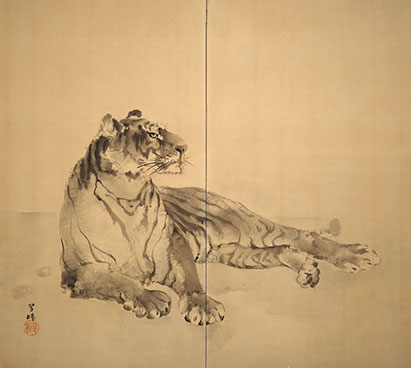
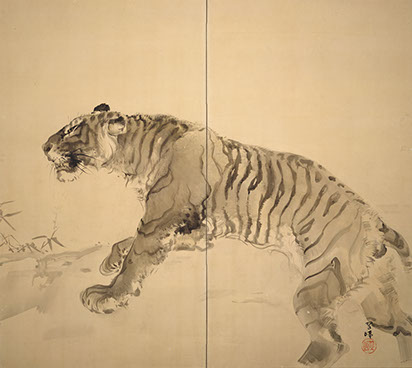
Nishiyama Suisho: Tigers
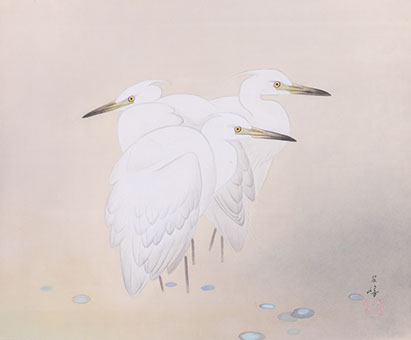
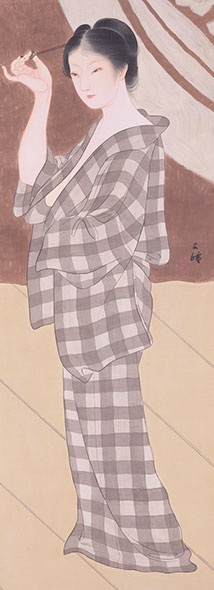
第3章『翠嶂をめ
Chapter 3 Suisho’s Contemporaries and Disciples
–Chikujokai and Shokosha–
In this chapter we present works by painters associated with Suisho. Takeuchi Seiho taught many disciples in addition to Suisho at his private art school Chikujokai. They included Nishimura Goun, skilled in the painting of animals, Uemura Shoen, renowned painter of beautiful women (bijinga) and Iguchi Kashu, who together with Suisho and Goun formed the “Chikujokai trio”. Suisho also established his own art school Shokosha and cultivated many important artists. At the time, Shokosha actively engaged in establishing study groups and holding exhibitions and occupied a prominent position in the Kyoto art scene. We have gathered examples of the many talented artists who gathered around Suisho, such as Nakamura Daizaburo, Domoto Insho, and Akino Fuku.


Takeuchi Seiho:
In Late Autumn, Torn Lotus Leaf and Egret
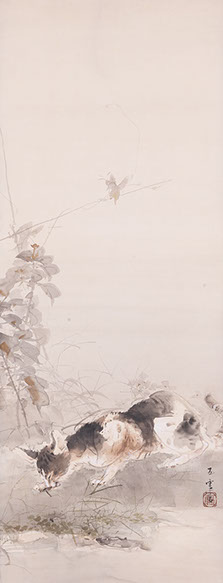
Autumn in The Back Garden
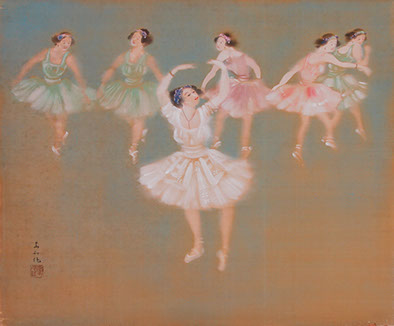
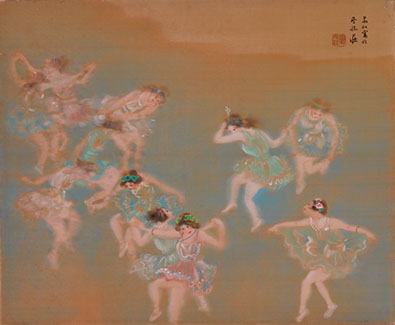
Iguchi Kashu: Dance
